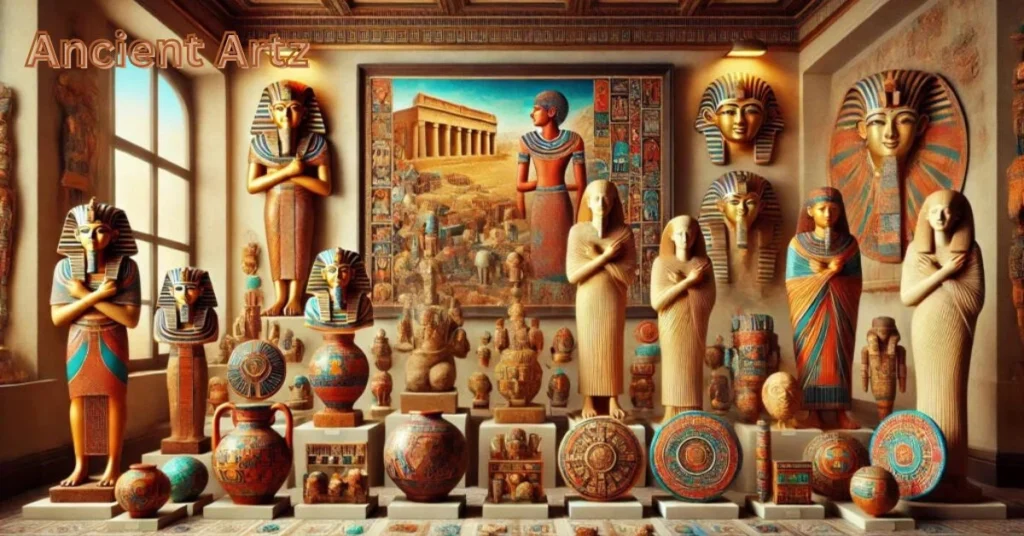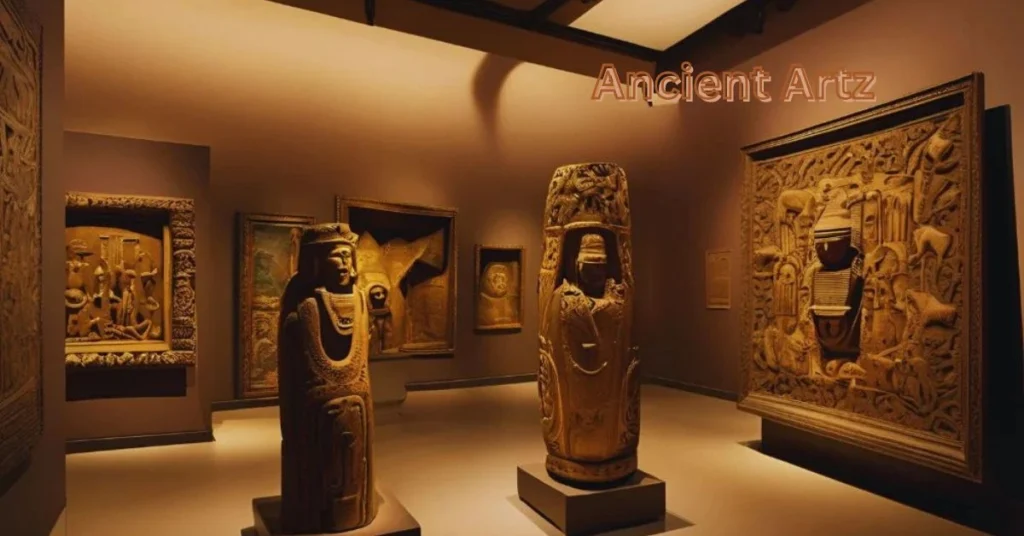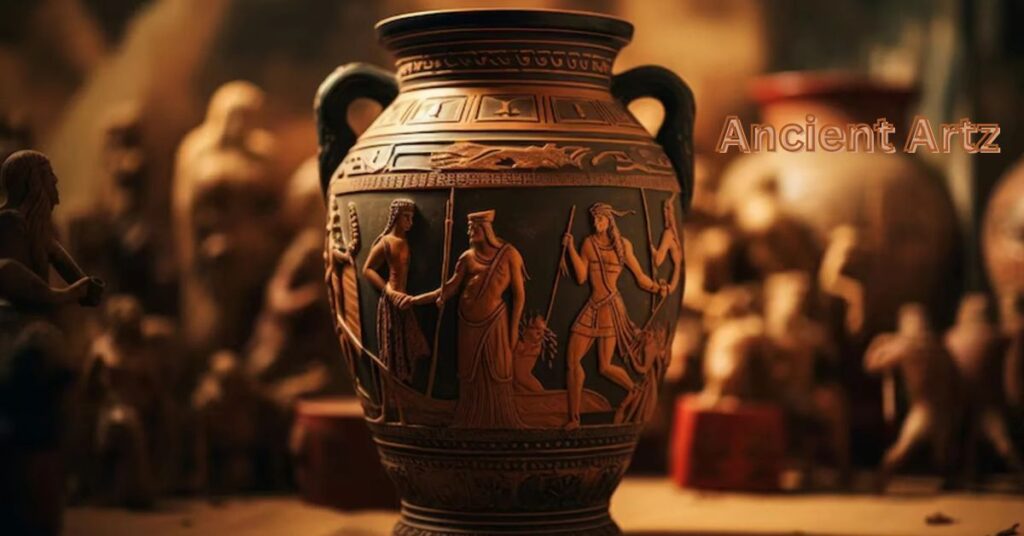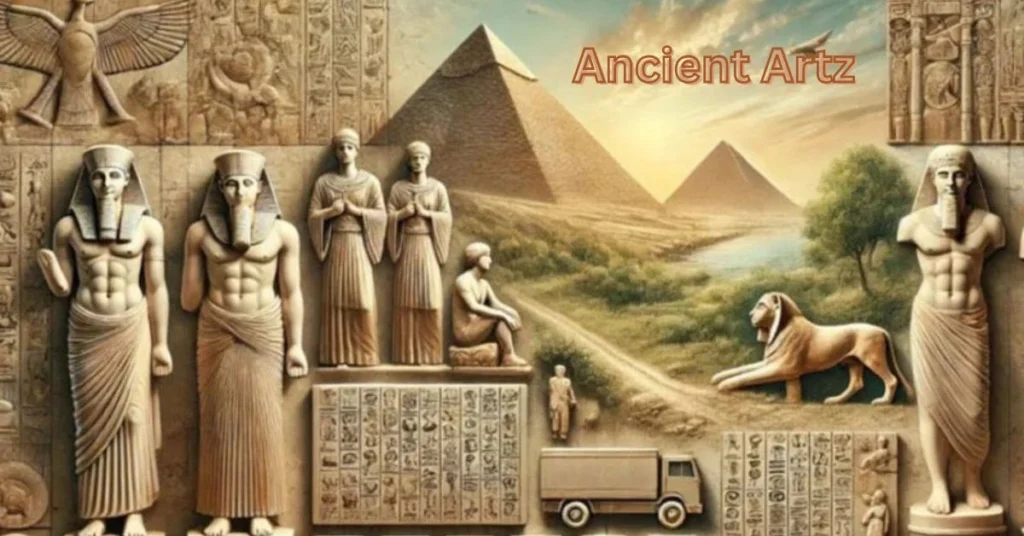Art has been an essential part of human history, shaping and reflecting the culture, beliefs, and identity of civilizations for millennia. Ancient Artz stands as a symbol of this enduring legacy, showcasing the timeless creativity of early societies and their profound impact on the modern world. This article explores the fascinating journey of Ancient Artz, examining its origins, significance, and the influence it continues to wield today.
The Dawn of Artistic Expression
Cave Paintings: Humanity’s First Canvas
The origins of art can be traced back to prehistoric times, when early humans adorned the walls of caves with mesmerizing depictions of their lives. From the Lascaux caves in France to the Altamira caves in Spain, these paintings capture hunting scenes, animals, and symbolic imagery. Using natural pigments like ochre and charcoal, early artists expressed their connection to nature and their spiritual beliefs.
The Purpose of Early Art
Far from being mere decoration, these early works served practical and ceremonial purposes. Cave paintings often acted as tools for storytelling, teaching, and invoking divine intervention in hunting or survival. They reveal the ingenuity of our ancestors in utilizing art to communicate and preserve their heritage.
Ancient Civilizations and Their Artistic Legacies

Mesopotamia: The Cradle of Civilization
Mesopotamia, often referred to as the “cradle of civilization,” gave rise to some of the earliest artistic achievements. From intricate pottery to the monumental ziggurats, Mesopotamian art reflects themes of religion, power, and daily life. The Code of Hammurabi, with its carved laws on a basalt stele, is a testament to the intertwining of art and governance.
Egyptian Art: Eternal Symbolism
The art of ancient Egypt remains synonymous with grandeur and symbolism. Pyramids, sphinxes, and hieroglyphs demonstrate the Egyptians’ mastery of architecture and visual storytelling. They used art to honor their gods, pharaohs, and the afterlife, ensuring that their culture and beliefs endured through time.
Greek and Roman Innovations
The classical art of ancient Greece and Rome introduced concepts of realism, proportion, and harmony. Greek sculptures like the Venus de Milo and Roman mosaics displayed a dedication to depicting human beauty and emotion. These civilizations set the foundation for Western art, influencing countless artists and movements.
Indus Valley Civilization: A Mystery in Terracotta
The Indus Valley Civilization contributed significantly to Ancient Artz with its terracotta figurines, seals, and intricate city planning. Despite the mystery surrounding their script, their art provides insights into their daily lives, trade, and religious practices.
Chinese and Japanese Art: Philosophical Expressions
Ancient Chinese and Japanese art reflected their philosophical and spiritual beliefs. From the delicate brushwork of Chinese scroll paintings to the Zen-inspired simplicity of Japanese art, these cultures demonstrated a profound connection between art and nature.
Mesoamerican Art: Symbols of Power and Belief
The civilizations of Mesoamerica, including the Maya, Aztec, and Olmec, created stunning works of art that symbolized power, spirituality, and cosmology. Monumental pyramids, jade carvings, and vibrant murals illustrate their advanced understanding of art and architecture.
Cultural Significance of Ancient Art

Preservation of Beliefs and Traditions
Ancient Artz served as a vessel for preserving cultural identity. Religious rituals, myths, and daily practices were immortalized through sculptures, frescoes, and carvings. These works not only offer a glimpse into the lives of ancient peoples but also highlight their shared human experience.
A Medium of Communication
In an age before widespread literacy, art was a universal language. From the cuneiform tablets of Mesopotamia to the pictorial glyphs of the Maya, Ancient Artz provided a means of conveying ideas, history, and values across generations.
Symbols of Power and Prestige
Art in ancient societies often symbolized power and prestige. Kings, emperors, and religious leaders commissioned grand structures and sculptures to assert their authority and inspire awe among their subjects.
Techniques and Materials: Mastering the Medium
Stone Carving and Sculpture
Stone, with its durability and versatility, was a favored medium for ancient artists. From the colossal Moai statues of Easter Island to the detailed reliefs of Angkor Wat, stone carving required immense skill and ingenuity. Temples, tombs, and monuments stand as enduring testaments to their craftsmanship.
Pottery and Ceramics
Pottery was both functional and artistic, showcasing intricate designs and cultural motifs. Ancient Chinese porcelain and Greek amphorae stand as examples of the fusion of utility and beauty. The art of glazing and firing clay evolved to create durable and decorative pieces that remain iconic today.
Metalwork and Jewelry
Metalwork, including gold, silver, and bronze, allowed ancient artisans to create exquisite jewelry, weapons, and ceremonial objects. The treasures of Tutankhamun’s tomb and the intricate Celtic designs are celebrated examples of this craft. Techniques like lost-wax casting and repoussé demonstrate their technical expertise.
Textiles and Weaving
Textile art was a significant aspect of ancient cultures, with woven fabrics, tapestries, and dyes reflecting social status and cultural identity. The Andean cultures of South America, for instance, were renowned for their vibrant and intricate textile designs.
Painting and Mosaics
Frescoes, mosaics, and wall paintings adorned temples, palaces, and homes, bringing scenes of mythology, nature, and daily life to vibrant detail. The mosaics of Pompeii and the frescoes of Knossos showcase the artistic flair of ancient societies.
The Philosophical Dimension of Ancient Artz

The Role of Spirituality
Many ancient artworks were deeply rooted in spirituality and cosmology. Whether it was the mandalas of ancient India, the totem poles of Native Americans, or the intricate carvings of Angkor Wat, art was a means of connecting with the divine and understanding the universe.
Reflections on Mortality and Immortality
Themes of life, death, and the afterlife were central to Ancient Artz. Tomb paintings, funerary sculptures, and ceremonial artifacts reflect the human desire to transcend mortality and leave a lasting legacy.
Enduring Influence of Ancient Art
Inspiring Modern Artists
The themes, techniques, and aesthetics of Ancient Artz continue to inspire modern artists. Movements such as the Renaissance drew heavily from classical antiquity, and contemporary creators often reinterpret ancient motifs in innovative ways.
Advancements in Technology and Restoration
Modern technology has revolutionized the study and preservation of ancient art. Techniques like 3D scanning, digital imaging, and AI-driven analysis have helped uncover hidden details and restore damaged works, ensuring that these masterpieces remain accessible for future generations.
Cultural Tourism and Economic Impact
Ancient Artz attracts millions of visitors to museums, archaeological sites, and exhibitions worldwide. This cultural tourism not only boosts local economies but also fosters a global appreciation for heritage and history.
The Ethical Debate: Ownership and Repatriation
The Controversy Surrounding Ancient Artifacts
The ownership of ancient artifacts often sparks heated debates. Many treasures, removed during colonial times, are housed in foreign museums. Countries like Egypt, Greece, and Nigeria have called for the repatriation of their cultural heritage.
Finding a Balance
Efforts are underway to balance preservation, access, and rightful ownership. Collaborative agreements and ethical guidelines aim to ensure that Ancient Artz is both protected and respected.
Case Studies in Repatriation
Notable cases, such as the return of the Elgin Marbles or the Benin Bronzes, highlight the complexities of these debates. They underscore the importance of dialogue and cooperation in resolving disputes.
FAQS
1. What is the significance of Ancient Artz in modern culture?
Ancient Artz serves as a foundation for modern cultural expressions, influencing contemporary art, architecture, and design. It provides insights into human history, values, and creativity, inspiring new interpretations and innovations.
2. How were ancient artworks preserved over the centuries?
Ancient artworks were preserved through natural factors like dry climates, protective coverings, and durable materials like stone and metal. Modern restoration techniques and museum conservation efforts also play a crucial role in preserving these treasures.
3. What materials did ancient artists commonly use?
Ancient artists used materials like stone, clay, metals, wood, and pigments derived from natural sources. Techniques such as carving, molding, and painting were employed to create their works.
4. How can we study Ancient Artz today?
Studying Ancient Artz involves visiting museums, archaeological sites, and online archives. Advances in technology, such as 3D scanning and virtual reality, also allow for immersive exploration of ancient artworks.
5. Why is repatriation of ancient artifacts important?
Repatriation ensures that cultural heritage is returned to its rightful owners, fostering respect and collaboration among nations. It also allows communities to reconnect with their historical identity and traditions.
6. What are some famous examples of Ancient Artz?
Famous examples include the Pyramids of Giza, the Parthenon sculptures, the Terracotta Army, and the frescoes of Pompeii. These masterpieces highlight the diversity and ingenuity of ancient cultures.
7. How does Ancient Artz continue to inspire modern artists?
Modern artists draw inspiration from ancient themes, techniques, and symbolism. This influence is evident in movements like Neoclassicism and contemporary art that reinterprets traditional motifs for modern audiences.
Conclusion
Ancient Artz is more than a window into the past; it is a bridge connecting us to the ingenuity and creativity of our ancestors. By studying, preserving, and celebrating Ancient Artz, we honor the enduring human spirit and its capacity to create beauty and meaning. As we continue this journey, may we draw inspiration from the timeless lessons of Ancient Artz and strive to leave our own artistic legacy for generations to come.
To stay updated with the latest developments in the tech world, check out our BeTechIT News section for in-depth articles and insights.








